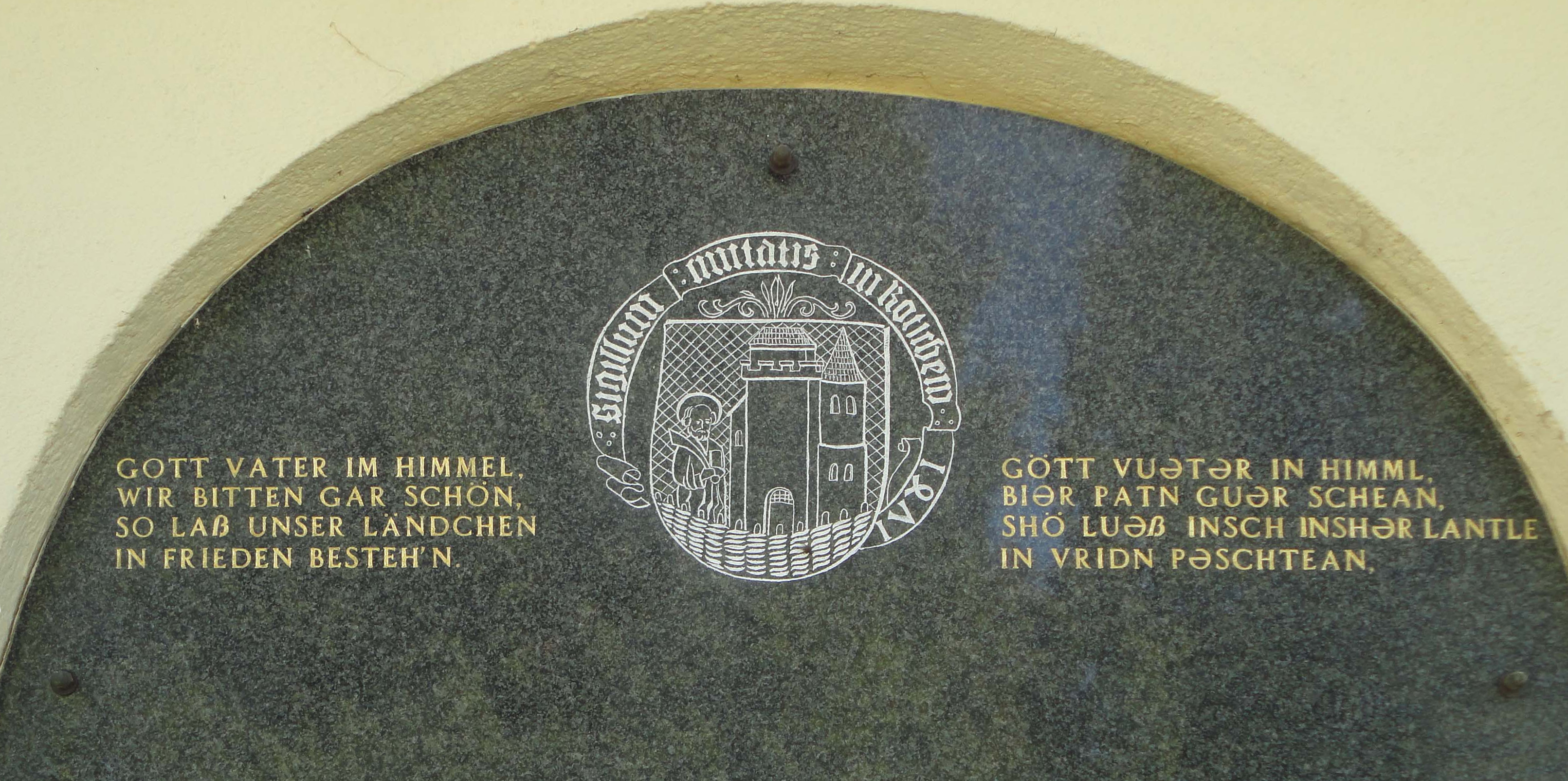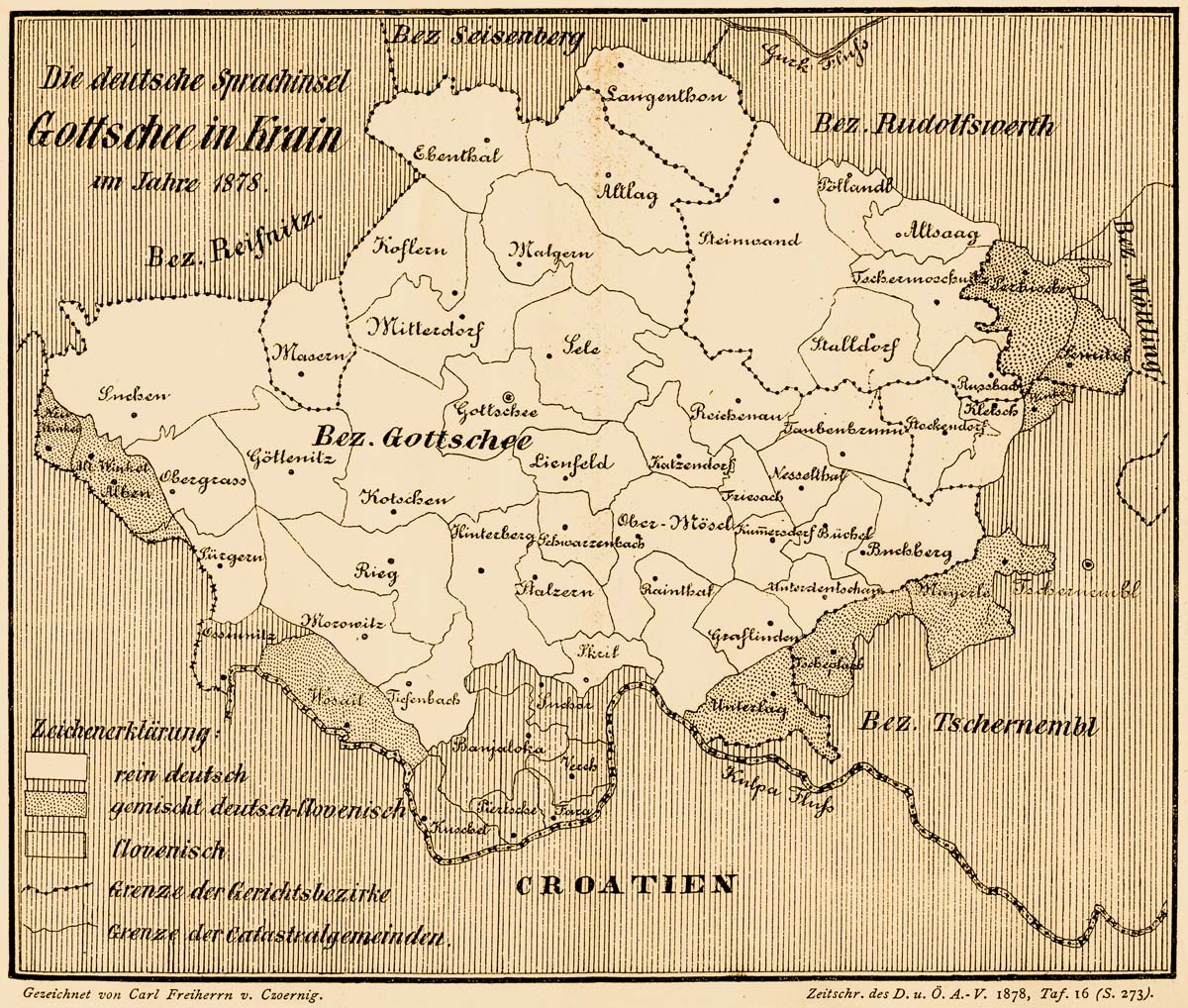|
Gottscheerish
Gottscheerish (''Göttscheabarisch'',Maridi Tscherne: Wörterbuch Gottscheerisch-Slowenisch. Einrichtung für die Erhaltung des Kulturerbes Nesseltal, Koprivnik/Nesseltal 2010. german: Gottscheerisch, sl, kočevarščina) is an Upper German dialect which was the main language of communication among the Gottscheers in the enclave of Gottschee, Slovenia, before 1941. It is occasionally referred to as Granish or Granisch in the United States (< German ''Krainisch'' 'n'), a term also used for Slovene. Today there are only a few speakers left in Slovenia and around the world. Language history Gottscheerish belongs to Southern Bavarian within the[...More Info...] [...Related Items...] OR: [Wikipedia] [Google] [Baidu] |
Gottschee
Gottschee (, sl, Kočevsko) refers to a former German-speaking region in Carniola, a crownland of the Habsburg monarchy, Habsburg Empire, part of the historical and traditional region of Lower Carniola, now in Slovenia. The region has been a county, duchy, district, and municipality during various parts of its history. The term often also refers to the entire Ethnolinguistics, ethnolinguistic Enclave and exclave, enclave regardless of administrative borders. Today Gottschee largely corresponds to the Municipality of Kočevje. The original German settlers of the region are called Gottschee Germans or Gottscheers, and their German dialect is called Gottschee German or Gottscheerish. Geography The Gottschee enclave encompassed a roughly oval-shaped area between 45° 46′ N and 45° 30′ N, and between 14° 36′ E and 15° 9′ E. Geographers divided the enclave into seven regions based on valleys (from west to east): * The Suchen Plateau () in the extreme west, with the (pre-1933) ... [...More Info...] [...Related Items...] OR: [Wikipedia] [Google] [Baidu] |
Upper German
Upper German (german: Oberdeutsch ) is a family of High German dialects spoken primarily in the southern German-speaking area (). History In the Old High German time, only Alemannic and Bairisch are grouped as Upper German. In the Middle High German time, East Franconian and sometimes South Franconian are added to this. Swabian splits off from Alemannic due to the New High German diphthongisation ().Frank Janle, Hubert Klausmann: ''Dialekt und Standardsprache in der Deutschdidaktik: Eine Einführung.'' Narr Francke Attempto Verlag, Tübingen, 2020, p. 30f. (chapter ''3.1.2 Die Gliederung der Dialekte'') Family tree Upper German proper comprises the Alemannic and Bavarian dialect groups. Furthermore, the High Franconian dialects, spoken up to the Speyer line isogloss in the north, are often also included in the Upper German dialect group. Whether they should be included as part of Upper German or instead classified as Central German is an open question, as they have traits o ... [...More Info...] [...Related Items...] OR: [Wikipedia] [Google] [Baidu] |
Gottschee Kocevje Trata Gott Vater Im Himmel
Gottschee (, sl, Kočevsko) refers to a former German-speaking region in Carniola, a crownland of the Habsburg Empire, part of the historical and traditional region of Lower Carniola, now in Slovenia. The region has been a county, duchy, district, and municipality during various parts of its history. The term often also refers to the entire ethnolinguistic enclave regardless of administrative borders. Today Gottschee largely corresponds to the Municipality of Kočevje. The original German settlers of the region are called Gottschee Germans or Gottscheers, and their German dialect is called Gottschee German or Gottscheerish. Geography The Gottschee enclave encompassed a roughly oval-shaped area between 45° 46′ N and 45° 30′ N, and between 14° 36′ E and 15° 9′ E. Geographers divided the enclave into seven regions based on valleys (from west to east): * The Suchen Plateau () in the extreme west, with the (pre-1933) municipalities of Obergras and Suchen; * The Back Distric ... [...More Info...] [...Related Items...] OR: [Wikipedia] [Google] [Baidu] |
Slovenia
Slovenia ( ; sl, Slovenija ), officially the Republic of Slovenia (Slovene: , abbr.: ''RS''), is a country in Central Europe. It is bordered by Italy to the west, Austria to the north, Hungary to the northeast, Croatia to the southeast, and the Adriatic Sea to the southwest. Slovenia is mostly mountainous and forested, covers , and has a population of 2.1 million (2,108,708 people). Slovenes constitute over 80% of the country's population. Slovene, a South Slavic language, is the official language. Slovenia has a predominantly temperate continental climate, with the exception of the Slovene Littoral and the Julian Alps. A sub-mediterranean climate reaches to the northern extensions of the Dinaric Alps that traverse the country in a northwest–southeast direction. The Julian Alps in the northwest have an alpine climate. Toward the northeastern Pannonian Basin, a continental climate is more pronounced. Ljubljana, the capital and largest city of Slovenia, is geogr ... [...More Info...] [...Related Items...] OR: [Wikipedia] [Google] [Baidu] |
Gottscheers
Gottscheers are the German settlers of the Kočevje, Kočevje region (a.k.a. Gottschee) of Slovenia, formerly Gottschee, Gottschee County. Until the World War II, Second World War, their main language of communication was Gottscheerish, a Bavarian language, Bavarian dialect of German. Origins They first settled in Carniola around 1330 from the German lands of County of Tyrol, Tyrol and Duchy of Carinthia, Carinthia and maintained their German identity and language during their 600 years of isolation. They cleared the vast forests of the region and established villages and towns. In 1809, they resisted the Illyrian Provinces, French annexation of the territory in the 1809 Gottscheer rebellion, Gottscheer Rebellion. With the end of the Habsburg monarchy in 1918, Gottschee became a part of the new Kingdom of Yugoslavia. The Gottscheers thus went from part of the ruling ethnicity of Austria-Hungary (and the ruling group in the estates of the province of Carniola itself) to an ethnic mi ... [...More Info...] [...Related Items...] OR: [Wikipedia] [Google] [Baidu] |



